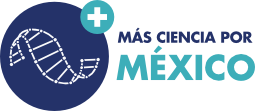Este texto fue escrito por Aldo Gael Luna Almaraz, y es el ganador del Primer Lugar en el Concurso de ensayo del Día del ADN México, llevado a cabo entre octubre de 2020 y febrero de 2021. El ensayo debe de discutir y analizar una pregunta sobre genética y sociedad formulada por la Asociación Americana de Genética Humana (ASHG por sus siglas en inglés). La pregunta puede ser consultada aquí. Conoce más sobre el concurso y los ganadores aquí.
The Human Genome Project made, with no doubt, a huge revolution in science because we were able to map the nitrogen bases configuration of the 27 thousand genes of our genome. Thanks to the HGP we uncover the secrets of our own life code and move forward in leaps and bounds in search of solving a thousand and one diseases that harass the different populations of the world every day. Proof of this are the great scientific advances that has been achieved since the culmination of the project such as the "genetic scissors" CRISPR-Cas9 and liquid biopsy to anticipate the presence of cancers in advance, among many other quite significant advances.
In retrospect, the HGP wouldn´t have been carried out if the Center for the Study of Human Polymorphisms were not created in 1984 in Paris, France. This center was dedicated to the collection and analysis of blood samples from large European families, and, after a while, this center became the main supplier of samples for the development of the project. The above resulted in 80% of all samples used for HGP genetic studies being of European origin.
The results of these studies are severely affected by this population´s representation as more than a half of the basis for the human genome model is of European descendance. If one thing nature has taught us throughout our existence is that every living being on earth is unique; the randomness and chaos of the universe conspired for 13 billion years to create the specific atomic configuration that makes up us and each other, and in genetics field it is not different. “Genetic variation among different groups of human populations has been found to be approximately 5 to 15%” (Guardado-Estrada, 2008, p.163). So, the use of these genetic studies for different populations genetical research is found to be rather ineffective because despite having a very small percentage that differentiates us among other humans, it results in an exaggeratedly large number of different genes which promote different characteristics.
An example of the above is the genetic variation present in African populations compared to European ones since an extremely common prevalence of a single allele (out of the 2 possible of the 300 existing) of sickle cell anemia has been found in much of Africans. Sickle cell anemia is a molecular hemoglobin disease in which erythrocytes are abnormal (elongated, thin, sickle-like). It is an inherited disease and those with this one usually dies at a very young age. However, those receiving only 1 allele of this disease by inheritance suffer from a milder condition called sickle cell anemia trait in which only 1% of all erythrocytes are sickle form, so they can live normally. This presence of 1 single sickle cell anemia allele in African populations provides a small but important resistance to malaria, an extremely common and deadly disease on the African continent. The above because of natural selection in search of the prevalence of the specie by modifying Africans genes.
Another example of genetic variation among human populations is the Mexican one, which was born in 1521 with the arrival of the Spanish conquistadors. The genetic makeup of Mexicans is not uniform throughout the country´s population, it is a combination of Spanish with Amerindian genetics that varies by social, demographic, and economic factors according to the geographical region analyzed. For mention some examples: in the southern part of the country, individuals with lower statures tend to prevail than in the north and hereditary respiratory diseases such as COPD or cancer often prevail in large cities than in the smaller and rural ones.
Finally, just as the human species has been evolving since its origin about 200 thousand years ago, science must also evolve and take into account genetic studies of more varied human populations depending on the population to study and its geographical area to carry out the appropriate genetic research because relying on genetic studies of mostly European populations for the study of others is not at all convenient but for mere analysis and comparison. In this way, more precise research can be developed on each population and see the different alleles that give individuals different characteristics in the face of diseases and, at the same time, develop new treatments for different diseases based on them, and by this, science would improve not only medicine but biomedical engineering and biotechnology in a significative way.
“If everyone were cast in the same mold, there would be no such thing as beauty”
-Charles Darwin
Referencias:
Guardado-Estrada, M., Queipo, G., Meraz-Ríos, M., Berumen-Campos, J. Diversidad genética en la población mexicana: Utilización de marcadores de ADN. Revista Médica del Hospital General de México. 2008.
Cyrklaff, M., Sánchez, C., Kilian, N., Bisseye, C., Simpore, J., Frischknecht, F., Lanzer, M. Hemoglobins S and C Interfere with Actin Remodeling in Plasmodium falciparum–Infected Erythrocytes. Science Magazine. 2011.
Elguero, E., Délicat-Loembet, L., Rougeron, V., Arnathau, C., Roche, B., Becquart, P., Gonzalez, J., Nkoghe, D., Sica, L., Leroy, E., Durand, P., Ayala, F., Ollomo, B., Renaud, F., Prugnolle, F. Malaria continues to select for sickle cell trait in Central Africa. PNAS Journal. 2015.
Martins, A. Genoma humano: 5 avances que están transformando la medicina. BBC News. 2020
Ross, D., Álvarez, L., Chávez, J., Pérez, L., Alberro, M., Lezcano, O. Genoma humano. Actualidades y perspectivas bioéticas. Revista Humanidades Médicas. 2002
La imagen de la viñeta fue creada por Gerd Altmann y es de libre acceso en Pixabay

